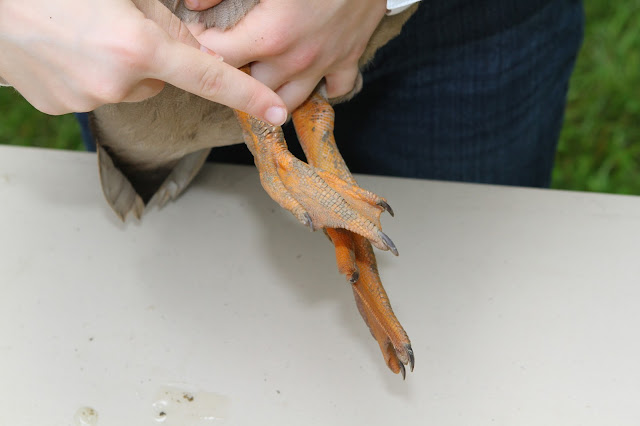My older sister, Kayley, was going to show her Black Cochin chickens at the fair this year. She completed her project, but couldn't bring them to the fair. She has a male named Twilight and a female named Stormfly.
 |
| Twilight and Stomfly |
The book
American Standed of Perfection says they should have a single comb with 5 rounded points and bright, clear eyes. Females should be round with soft, fluffy feathers (balls of fluff and feathers) and males should be broad and big. They both have feathers covering their legs and 3 outer toes. They also both have large capes and tails so big that they collide, hiding the back. Females should be about 9 lbs and males about 11 lbs.
 |
| black cochin chick |
Cochins are very good pet chickens. They sit in your lap like a cat and are very ornamental. "Black cochins have a beatiful green gleam on their feathers and an intelligent shine in their eyes," says Kayley. They are also very friendly, calm, and quiet. The roosters are not violent, only skittish. Although they aren't great layers,with medium size eggs, they are great mothers and can foster other chickens and even ducks. They are often broody.
Cochins can be black, blue, or splash. By breeding two blue cochins you can get blue, black, or splash offspring. By breeding a splash cochin with a blue or black cochin, you can add color to the feathering. My sister has a pair of black and a pair of blue cochins. She also has two female splash cochins. They are very dirty right now because we have had a lot of rain, so they are not in show condition.
 |
| blue cochin hen - she is broody right now - her name is Blue |
 |
| splash cochin hen - she is broody right now - her name is Fred |
 |
| Fluffkins and Blue - blue cochins |
 |
| Dave and Fred - splash cochin hens - when they were little we thought that they were males |
Cochins are in the Asiatic class and originated in China. They were reconized for their "prettiness" and started " fancy" poultry like we know it today.
I think that my sister's Black Cochins are nice and pretty birds. Stormfly dosen't like it when she is on a nest and you take the eggs from underneath her. When you do reach under her to take the eggs, she makes weird noises.
 |
| Dave and Fred as chicks |
 |
| Blue as a chick |
 |
| Fluffkins as a chick |




























































